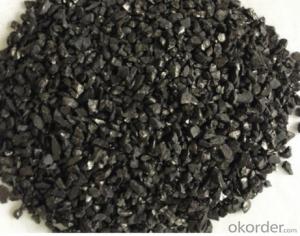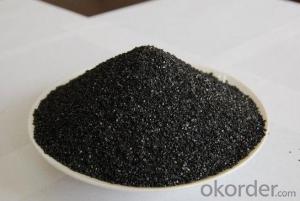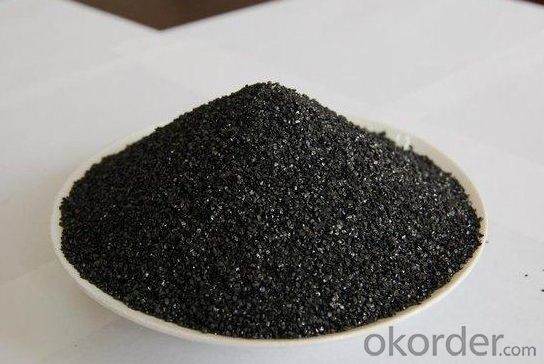Indonesian Steam Coal Supplier. Looking for Coal Agent Oversea
- Loading Port:
- Tianjin
- Payment Terms:
- TT OR LC
- Min Order Qty:
- 1000 m.t.
- Supply Capability:
- 20000 m.t./month
OKorder Service Pledge
OKorder Financial Service
You Might Also Like
1.Structure of Anthracite Description
Anthracite is made from Shanxi,the coal capital of the word .The quality is very high due to its unique resource .It has been exported to most of the world ,especially to Japan and Korea,as well as mid east.
It is commonly used in drinking water ,food industry ,chemical /dyeing industry ,sea/salt water filtration ,petro-chemical industry ,pulp/paper industry ,sauna,spa,pool,boiler ,etc.
Advantages:
1. Longer Filter Runs2. Faster Filtration3. Long Lifetime4. Good Separation Characteristics5. Savings water and power in washing6.Removes more iron and manganese salts tration ,petrochemical industry ,pulp /paper industry ,sauna,spa,pool,boiler,etc.
2. Main Features of Anthracite
Fixed Carbon: 78 %
Ash: 18 %
Volatile Matter: 4 %
Sulphur: 1.0 %
Moisture: 11 %
Gross Calorific Value: 6450 Kcal
Size: 0 mm - 19 mm: 90%
3. The Images of Anthracite
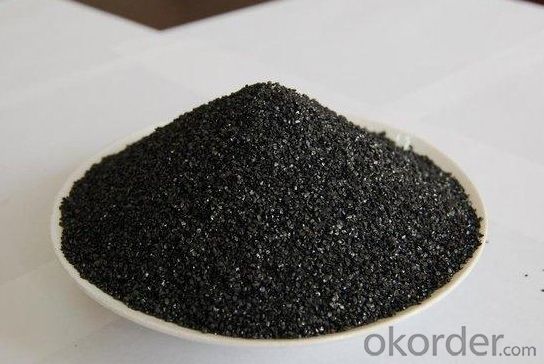
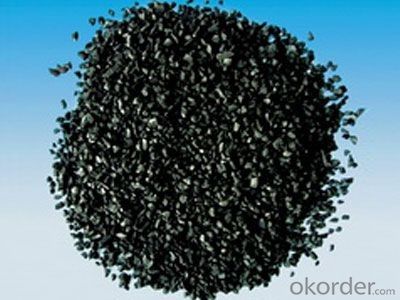
4. The Specification of Anthracite
1. Fixed carbon: 90%min
2.Uniform particles
3.Good separation characteristics
4. Long life
5. Widely used
6.activated anthracite:
7.Certificate: ISO9001, ISO9002, NSF
8.Usage: for water and air purification, etc.
5.FAQ of Anthracite
1). Q: Are you a factory or trading company?
A: We are a factory.
2). Q: Where is your factory located? How can I visit there?
A: Our factory is located in ShanXi, HeNan, China. You are warmly welcomed to visit us!
3). Q: How can I get some samples?
A: Please connect me for samples
4). Q: Can the price be cheaper?
A: Of course, you will be offered a good discount for big amount.
- Q: Why use carbon batteries for alarm clocks?
- Look at your clock is what kind of, some nickel battery (batteries) can also be a bit expensive. Lithium battery. And what in fact almost never mind, as long as you start voltage alarm on the line. You said carbon battery is called alkaline battery his standard voltage is 1.5V the charging the battery is generally 1.2V. to this problem is not a reward.
- Q: Isotopes of carbon
- First, 14C dating method14C is the nature of the cosmic rays and atmospheric nitrogen produced by nuclear reactions. The carbon -14 not only exists in the atmosphere, with the absorption and metabolism of the organism, through the food chain into animal or human living organisms. All because of carbon in the generation side and the -14 side, at a constant rate decay, resulting in carbon -14 in nature (including all organisms) ratio and the content of carbon stable isotope -12 content remained unchanged.When the organism dies, due to the decay of carbon The new supersedes the old. stop, the decrease of -14, so the relative ratio of -14 and -12 in carbon carbon content corresponding decrease. By determination of biological fossils unearthed in the medium carbon -14 and carbon content of -12, can accurately calculate the death of the organisms (i.e. survival) in a given organism unearthed. For example the fossil, M grams of carbon (or carbon determination of the quality of -12), according to the relative ratio of various carbon isotope content of nature can be calculated, the organism is alive, the quality of carbon -14 should be m grams. But the actual measured carbon quality of -14 only m grams of 1/8, according to the half-life the biological death has been 3 for 5730 years, has been dead for seventeen thousand two hundred and ninety years. The United States radiochemist W.F. Libby has invented the method of radioactive dating, made outstanding contributions to Archaeology He was awarded the Nobel prize for chemistry in 1960Because of the very low carbon content of -14, and the half-life is very long, so -14 can accurately measure the carbon 5 to within 60 thousand years of the unearthed cultural relics, for older unearthed cultural relics, such as living in five hundred thousand years ago, Zhoukoudian Beijing man, using carbon -14 dating method is not determined to.
- Q: What's the difference between blue and red Panasonic batteries (carbon)?
- Blue is leak, proof, general, Purpose, general use battery (leak proof)Red is the long life long life battery (suitable for watches and clocks and other small power appliances)And heavy duty green seems to be good for high power appliances, such as toy cars
- Q: What is carbon nanoelectronics?
- Carbon nanoelectronics refers to the field of research and development that focuses on utilizing carbon-based materials, such as carbon nanotubes or graphene, for the creation and advancement of electronic devices and components on a nanoscale level. These nanoscale carbon structures possess unique electrical properties that make them highly desirable for applications in a wide range of electronic devices, including transistors, sensors, and interconnects. One of the key advantages of carbon nanoelectronics is the exceptional electrical conductivity and thermal properties of carbon nanomaterials. Carbon nanotubes, for instance, exhibit excellent electrical conductivity, comparable to copper, but with a much smaller footprint. This property allows for the creation of smaller and more efficient electronic devices, leading to advancements in areas such as miniaturization and energy efficiency. Another noteworthy aspect of carbon nanoelectronics is the immense strength and flexibility of carbon nanomaterials. Carbon-based structures like graphene possess exceptional mechanical properties, making them highly durable and resilient. This property enables the production of flexible and wearable electronic devices that can conform to various surfaces, opening up new possibilities for electronics design and integration. Additionally, carbon nanoelectronics offers the potential for high-speed and low-power electronic devices. The unique electronic properties of carbon nanomaterials, such as their ability to carry electric charge at an extremely high speed, make them suitable for high-frequency applications. Furthermore, the low power consumption of carbon nanomaterials can lead to the development of energy-efficient electronic devices. Overall, carbon nanoelectronics holds great promise for revolutionizing the field of electronics by enabling the creation of smaller, faster, and more energy-efficient devices. Continued research and development in this field are expected to lead to breakthroughs in various industries, including computing, telecommunications, healthcare, and energy.
- Q: What is the impact of carbon emissions on agriculture?
- Carbon emissions have a significant impact on agriculture as they contribute to climate change, leading to adverse effects on crop yields, soil fertility, and water availability. Increased levels of carbon dioxide in the atmosphere can enhance photosynthesis to some extent, but this positive effect is often offset by rising temperatures, altered precipitation patterns, and increased frequency of extreme weather events. These changes disrupt traditional growing seasons, promote the spread of pests and diseases, and reduce food production. Additionally, carbon emissions also contribute to air pollution, which can further harm plants, livestock, and human health. Therefore, reducing carbon emissions and adopting sustainable agricultural practices are crucial to mitigate these negative impacts and ensure food security for future generations.
- Q: What are the impacts of carbon emissions on the stability of permafrost?
- Carbon emissions have a significant impact on the stability of permafrost. Permafrost refers to the layer of soil, sediment, and rock that remains frozen for at least two consecutive years. It covers vast areas in the Arctic, subarctic regions, and high-altitude mountain ranges. One of the main impacts of carbon emissions on permafrost stability is the acceleration of climate change. Carbon dioxide (CO2) and other greenhouse gases trap heat in the atmosphere, leading to global warming. As temperatures rise, permafrost starts to thaw, causing a range of negative consequences. Thawing permafrost releases large amounts of stored carbon into the atmosphere. This carbon was previously locked in the frozen organic matter, such as dead plants and animals, which accumulated over thousands of years. As permafrost thaws, microbes decompose this organic matter and release greenhouse gases like carbon dioxide and methane. These emissions create a positive feedback loop, further exacerbating climate change and leading to more permafrost thawing. The release of carbon from thawing permafrost contributes to the overall increase in atmospheric greenhouse gas concentrations. This, in turn, amplifies global warming and global climate change. The impacts are not limited to the Arctic; they affect the entire planet. Rising temperatures, sea-level rise, extreme weather events, and disruptions to ecosystems are some of the consequences of global climate change. Permafrost thaw also affects infrastructure and human settlements in the Arctic and subarctic regions. Buildings, roads, pipelines, and other infrastructure built on permafrost can be destabilized as the ground beneath them softens. This can lead to structural damage and economic losses. Additionally, communities that rely on permafrost for traditional activities such as hunting, fishing, and transportation face challenges as the landscape changes. The impacts of carbon emissions on permafrost stability are not only local but also global. The release of stored carbon from permafrost contributes to climate change, which has far-reaching consequences for ecosystems, economies, and societies worldwide. It is crucial to reduce carbon emissions and mitigate climate change to preserve permafrost and its vital role in the Earth's climate system.
- Q: Carbon fiber refractory?
- 3, pre oxidized carbon fiber cloth, can withstand 200--300 degrees of high temperature
- Q: What is the burning point of carbon?
- There are many forms of carbon, such as charcoal, coal, and even diamonds!And different forms have different ignition points!Generally speaking, the ignition point of charcoal is relatively low, about 300 degrees, and the coal is higher, at 600 - 700 degrees!
- Q: How does carbon impact the availability of sustainable development policies?
- Carbon impacts the availability of sustainable development policies by directly contributing to climate change. The excessive emission of carbon dioxide and other greenhouse gases from human activities leads to global warming, which in turn affects natural resources, ecosystems, and communities. To mitigate the negative impacts of carbon, sustainable development policies aim to reduce carbon emissions, promote renewable energy sources, and encourage sustainable practices. By addressing carbon emissions, these policies help create a more sustainable future by preserving resources, minimizing environmental degradation, and fostering social and economic well-being.
- Q: How does carbon impact the availability of clean energy solutions?
- The availability of clean energy solutions is significantly affected by carbon. Climate change, caused mainly by carbon emissions from burning fossil fuels and human activities, poses a serious threat to the environment and human well-being. Therefore, there is an urgent need to transition to cleaner energy sources that emit less carbon. Clean energy solutions, such as solar and wind power, have the potential to greatly reduce carbon emissions. These energy sources generate electricity without burning fossil fuels, resulting in minimal to no carbon emissions. By replacing traditional energy sources with clean alternatives, we can decrease our carbon footprint and mitigate climate change. However, the presence of carbon emissions impacts the availability and scalability of clean energy solutions in multiple ways. Firstly, the continued dependence on carbon-intensive energy sources, like coal and oil, hampers the rapid adoption of clean energy technologies. The existing infrastructure and investments in fossil fuel-based energy systems make it challenging to transition to clean alternatives. Secondly, carbon emissions contribute to global warming, which affects the availability and efficiency of certain clean energy solutions. For instance, higher temperatures can decrease the effectiveness of solar panels and affect the output of hydropower due to changes in rainfall patterns. This emphasizes the significance of reducing carbon emissions to ensure the long-term viability and efficacy of clean energy technologies. Moreover, carbon emissions have economic implications that can influence the availability of clean energy solutions. Governments and policymakers play a crucial role in encouraging the adoption of clean energy through regulations, subsidies, and carbon pricing mechanisms. These policies can impact the affordability and accessibility of clean energy technologies, making them more appealing to investors and consumers. In conclusion, carbon emissions have a profound impact on the availability of clean energy solutions. By reducing carbon emissions and transitioning to cleaner energy sources, we can mitigate climate change, enhance the efficiency of clean energy technologies, and create a more sustainable future. It is crucial for governments, businesses, and individuals to prioritize the development and adoption of clean energy solutions to ensure a cleaner and healthier planet for future generations.
Send your message to us
Indonesian Steam Coal Supplier. Looking for Coal Agent Oversea
- Loading Port:
- Tianjin
- Payment Terms:
- TT OR LC
- Min Order Qty:
- 1000 m.t.
- Supply Capability:
- 20000 m.t./month
OKorder Service Pledge
OKorder Financial Service
Similar products
Hot products
Hot Searches
Related keywords
